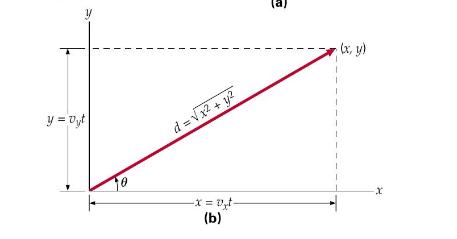If the diagonally moving ball in Figure 3.1a has a constant velocity of (0.50 mathrm{~m} / mathrm{s})
Question:
If the diagonally moving ball in Figure 3.1a has a constant velocity of \(0.50 \mathrm{~m} / \mathrm{s}\) at an angle of \(37^{\circ}\) relative to the \(x\)-axis, find how far it travels in 3.0 s by using \(x\) - and \(y\)-components of its motion.
THINKING IT THROUGH. Given the magnitude and direction (angle) of the velocity of the ball, the \(x\) - and \(y\)-components of the velocity can be found. Then the distance in each direction can be computed. Since the \(x\) - and \(y\)-axes are at right angles to each other, the Pythagorean theorem gives the distance of the straight-line path of the ball, as shown in Figure 3.1b. (Note the procedure: Separate the motion into components, calculate what is needed in each direction, and recombine if necessary.)

Step by Step Answer:

College Physics Essentials Electricity And Magnetism Optics Modern Physics Volume Two
ISBN: 9781032337272
8th Edition
Authors: Jerry D. Wilson, Anthony J. Buffa, Bo Lou






